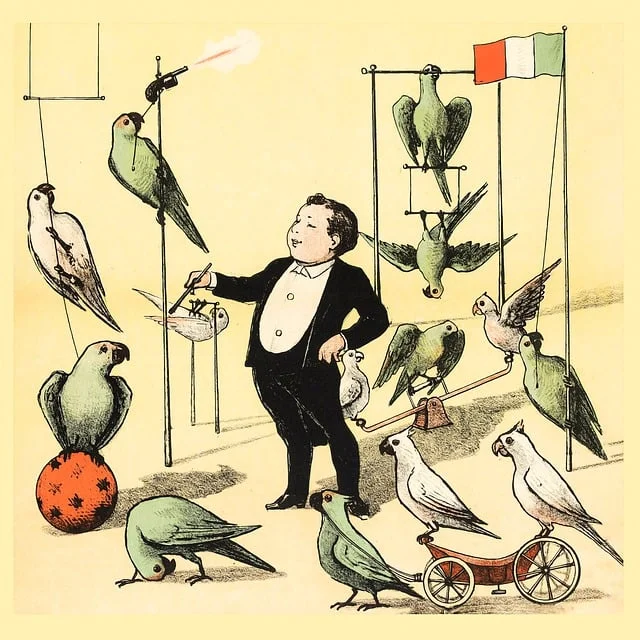Welcome to our comprehensive guide to parrot training. At petscareworld.com, we believe that effective parrot training is the key to establishing a strong bond with your bird while ensuring their well-being. In this article, we’ll talk about all kinds of parrot training. We’ll give you smart tips and tricks from experts to help you teach your parrot well. Whether you’re new to having a parrot or you’re really into them, this guide will help you be a good friend to your bird.
Parrot Training: Understanding Parrot Behavior
Before you start training a parrot, it’s important to know how they act. Parrots are super smart! They can mimic sounds, learn tricks, and sometimes even talk like people. But each parrot is different, with its own personality and speed for learning. So, it’s important to be patient and keep practicing while training them.
Creating a Positive Parrot Training Environment
A positive and conducive training environment sets the foundation for successful parrot training. Here are some key elements to consider:
- Establishing Trust: It’s really important to make your parrot trust you. Hang out with them, talk to them nicely, give them treats, and gently pet them. This helps them see you as someone good and builds a strong friendship.
- Ensuring Safety: Make sure the place where you train your parrot is safe. Get rid of things that could hurt them, like plants that are poisonous. Keep windows and doors closed, and avoid loud noises. A quiet and safe place helps your parrot learn better.
- Providing Enrichment: Parrots are intelligent and curious, so they need things to keep their minds busy. Give them different toys, puzzles, and games to play with. Change the toys now and then to keep them interested and make sure they stay entertained.
Basic Parrot Training Techniques
Now that we have laid the groundwork for successful training let’s explore some basic techniques that will help you effectively train your parrot.

Target Training Your Parrot
Target training involves teaching your parrot to touch a target stick or an object with its beak or feet. This technique is useful for teaching basic commands and tricks. Here’s how you can get started:
- Hold the target stick near your parrot and wait for it to approach and touch it.
- As soon as your parrot touches the target stick, reward it with a treat and offer verbal praise.
- Repeat the process, gradually increasing the distance and complexity of the target.
- Positive Reinforcement
Positive support is a powerful training technique that involves rewarding desired behaviors to encourage their repetition. When your parrot displays a behavior you want to reinforce, such as stepping onto your hand, immediately reward it with a treat and offer praise. This strengthens the association between the behavior and the positive outcome, increasing the likelihood of the behavior being repeated.
Clicker Training Your Parrot
Clicker training is a widely used method for teaching parrots new behaviors. It involves using a clicker, a small handheld device that emits a distinct clicking sound when pressed. Here’s how to use clicker training effectively:
- Begin by associating the clicker sound with a reward. Click the device and immediately offer a treat to your parrot.
- Once your parrot makes the connection between the clicker sound and the reward, you can use the clicker as a marker to reinforce desired behaviors. Click when your parrot performs the desired behavior, and promptly follow it with a reward.
- Step-up Training
“Step-up” is a fundamental command that teaches your parrot to climb onto your hand or a designated perch. Follow these steps to teach your parrot the step-up command:
- Position your hand or the perch near your parrot’s feet and say “step-up” in a clear and gentle tone.
- Gently apply pressure to your parrot’s lower chest, encouraging it to step onto your hand or the perch.
- Once your parrot complies, reward it with a treat and praise. Repeat the process, gradually reducing the pressure applied until your parrot responds to the verbal command alone.
Advanced Parrot Training Techniques
Once your parrot has mastered the basic training techniques, you can progress to more advanced training exercises. These techniques will challenge your parrot’s mental abilities and further strengthen your bond. Here are a few examples:
Recall Training / Flight Training your Parrot
Recall training involves teaching your parrot to come to you on command. Start in a familiar and controlled environment, such as a small room or an enclosed area. Follow these steps:
- Move a short distance away from your parrot and call its name in an inviting tone.
- Extend your arm or hold a target stick as a visual cue.
- When your parrot flies or walks toward you, reward it with a treat and praise.
- Gradually increase the distance and distractions as your parrot becomes proficient in recalling.
- Speech Training
Many parrot species have the ability to mimic human speech to some extent. Speech training can be a fun and rewarding activity for both you and your parrot. Here are some tips to get started:
- Choose simple words or phrases and repeat them consistently.
- Speak clearly and enunciate the words to help your parrot grasp the sounds.
- Use positive reinforcement, rewarding your parrot when it attempts to mimic the words or phrases correctly.
Remember, not all parrots will develop speech abilities, so it’s important to have realistic expectations and embrace your parrot’s unique talents.
Frequently Asked Questions (FAQs)
How long does it take to train a parrot?
The time it takes to train a parrot can vary depending on various factors, including the individual parrot’s personality, previous training experiences, and the training techniques used. Generally, basic training can take several weeks to a few months, while advanced training may require more time and dedication. Remember that each parrot is unique, so it’s important to be patient and consistent throughout the training process.
Can all parrot species be trained?
Yeah, most parrots can learn stuff, but it varies between species and individual parrots. Some, like African Greys and Amazons, are awesome at learning and copying speech. But smaller ones like Budgies and Lovebirds might need easier ways to learn. So, it’s important to teach them based on what works best for each parrot.
What are some common challenges in parrot training?
Parrot training can present a few challenges along the way. Here are some common ones:
- Biting: Sometimes, parrots bite when they feel scared or want to protect themselves. It’s good to figure out why they’re biting and work on making them trust you more.
- Distractions: Parrots can easily lose focus when there’s a lot going on around them. To help with training, try to keep the place quiet and free from too many things that might grab their attention.
- Stubbornness: Some parrots may exhibit stubborn behavior and resist training initially. Patience, consistency, and positive reinforcement can help overcome this challenge over time.
Can older parrots be trained?
Yep, older parrots can learn new things, but it might take more time and patience. They might have habits that need changing slowly. Start with easy training and move to harder stuff bit by bit. Make sure the training is fun and nice for your parrot. Being positive and doing training regularly helps them learn, no matter their age.
Are there any risks involved in parrot training?
While parrot training is generally safe. It’s important to be aware of potential risks and take necessary precautions. Some points to consider include:
- Injury: Training activities involving physical contact, such as step-up training, should be done carefully to avoid accidentally causing harm to your parrot.
- Stress: Ensure that training sessions are kept short and enjoyable to prevent stress or frustration for your parrot.
- Diet and health: Make sure your parrot eats a good mix of food and gets regular check-ups from an avian vet to stay healthy while training.
If you’re worried about your parrot’s health or behavior during training, talk to an avian vet or an experienced parrot trainer for advice.
Conclusion
Training your parrot is a great way to strengthen your friendship. Understand how parrots act, make training a good experience, and use effective techniques. Stay patient, keep at it, and always care for your parrot. With time and effort, you’ll have a close bond and see how smart your parrot really is.
Enjoy teaching your parrot new things, and celebrate each step they learn. Your hard work will give you a happy, clever parrot that’s a great friend for a long time.






